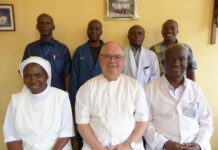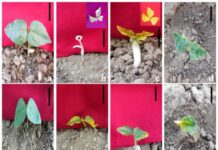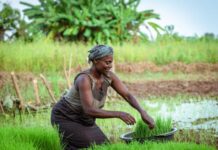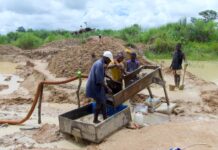A recent study by Sono et al. (2025) titled “Pilot study to evaluate patients’ understanding of key terms and aspects of antimicrobial use in a rural province in South Africa findings and implications” published in Advances in Human Biology, reveals patients in rural South Africa misunderstand antibiotics and antimicrobial resistance, face language barriers, and often access antibiotics without prescriptions.
“
Patients in rural South Africa poorly understand antibiotics and AMR, face language barriers, and often access antibiotics without prescriptions.
– Sono et al. 2025
The study investigates patients’ comprehension of critical concepts related to antibiotics and antimicrobial resistance (AMR), particularly when these ideas are communicated in their native languages. The research aimed to assess understanding of terms like “antibiotic” and “AMR,” identify communication challenges between pharmacists and patients due to language barriers, and pre-test a questionnaire translated into Sepedi, Tshivenda, and Xitsonga, based on an earlier English version. Findings from the pilot revealed that 11 out of 15 patients in Part 1 received antibiotics, with 8 obtaining them without prescriptions from independent pharmacies. Misconceptions were common: some patients believed antibiotics were for “cleansing” infections, including sexually transmitted infections, while many thought AMR meant their bodies were resistant to antibiotics. Additionally, 67% of participants believed antibiotics could treat colds and coughs. Overall, terms like “antibiotic” and “AMR” were poorly understood in native languages, highlighting significant knowledge gaps. To address these issues, the revised questionnaire will be used in a larger main study, with interviews conducted in patients’ preferred languages to improve comprehension and ensure more accurate data collection.
How the Study was Conducted
The study was conducted as a pilot evaluation to assess patients’ understanding of antibiotics and antimicrobial resistance (AMR) in a rural South African province, with a focus on how these concepts are interpreted in native languages. It was carried out across 10 pharmacies—five chain and five independent—with a total of 30 patients divided into three language groups: Sepedi, Tshivenda, and Xitsonga. Each language group included 10 participants, split into two groups of five for different sections of the questionnaire.
The questionnaire consisted of two parts. Part 1 explored patients’ experiences with purchasing antibiotics, particularly without prescriptions, while Part 2 assessed understanding of antibiotics and AMR, including relevant terminology and concepts. To ensure clarity and comfort, the questionnaire was translated from English into the three local languages, and interviews were conducted in each patient’s preferred language.
Data collection involved voluntary, face-to-face interviews at the pharmacies, with responses recorded by the researchers. The study also observed whether antibiotics were dispensed with or without prescriptions.
The pilot aimed to identify misunderstandings or confusion around antibiotic use and AMR, evaluate how well key terms translate into local languages, and refine the questionnaire for a larger, more comprehensive follow-up study.
What the Authors Found
The authors found that patients in this rural South African province have poor understanding of antibiotics and antimicrobial resistance, compounded by language barriers, misconceptions about appropriate use, and frequent access to antibiotics without prescriptions.
Why is this important
Public Health Impact: Misuse of antibiotics, especially in rural communities, accelerates antimicrobial resistance, making infections harder to treat.
Language and Cultural Barriers: Key medical terms like “antibiotic” and “AMR” often don’t translate clearly, leading to misunderstandings and poor health decisions.
Pharmacy Practices: Independent pharmacies frequently dispense antibiotics without prescriptions, highlighting regulatory gaps and the need for provider education.
Foundation for Future Action: The study informs better communication strategies, improved research tools, and shared responsibility among patients, healthcare workers, and governments to combat AMR.
What the Authors Recommended
- Ensure key terms like “antibiotic” and “AMR” are clearly explained in English and local languages, making them culturally and linguistically accessible.
- Include questions that distinguish between bacterial and viral infections to assess patients’ understanding of when antibiotics are appropriate.
- The study highlight that antibiotic stewardship requires collaboration among patients, healthcare workers, and government authorities.
- Furthermore, conduct interviews in patients’ preferred languages to enhance comprehension, comfort, and accuracy of responses.
The pilot study highlights critical gaps in patients’ understanding of antibiotics and AMR in rural South Africa, emphasizing the need for culturally and linguistically tailored education, improved pharmacy practices, and collaborative efforts among patients, healthcare workers, and authorities to promote responsible antibiotic use and combat antimicrobial resistance.
















 The African Research (AR) Index is a comprehensive scholarly directory and database focused explicitly on journal publishers that publish and disseminate African research.
The African Research (AR) Index is a comprehensive scholarly directory and database focused explicitly on journal publishers that publish and disseminate African research.

